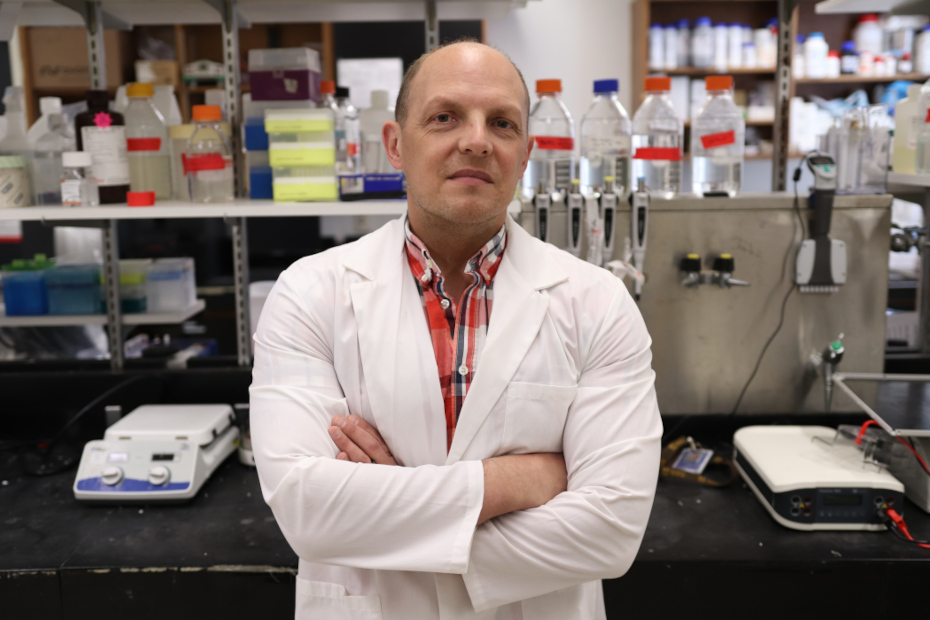A world-class laboratory to be constructed on the Bannatyne campus will meet high standards for biosafety, it was announced in May.
The lab, a first for any university in the province, will be a Containment Level 3 facility.

It will allow UM researchers to work with potentially deadly pathogens – such as SARS-CoV-2, avian influenza (H5N1), mpox or new disease-causing organisms – in a highly secure space.
The lab will be equipped with biocontainment features such as double doors, a special ventilation system and sealed windows, floors and walls. Researchers will wear head-to-toe personal protective equipment.
“The facility will be designed to help prepare us for the next pandemic – whatever that will be,” said Keith Fowke [B.Sc. (Hons.)/88, PhD/95], professor and department head of medical microbiology and infectious diseases at the Max Rady College of Medicine.
The federal government announced funding of nearly $10 million to support the construction of the lab, to be called the PRAIRIE One Health Emerging Respiratory Disease Centre. That’s a portion of $57 million in federal funding awarded to a partnership between the Universities of Manitoba, Saskatchewan, Alberta and Calgary to conduct innovative vaccine and biomanufacturing research.
The UM facility will be designed over the next year, with the goal of having the lab built in the Basic Medical Sciences Building and ready for research by the spring of 2028, said Dr. Jason Kindrachuk, UM Canada Research Chair in molecular pathogenesis of emerging viruses.
Kindrachuk, associate professor of medical microbiology and infectious diseases and researcher with the Children’s Hospital Research Institute of Manitoba, will be the lab’s director.
“Since the peak of the COVID-19 pandemic, there hasn’t been a downshift in emerging infectious diseases – like the recent mpox and H5N1 outbreaks,” he said. “I’m busier than I’ve ever been, and all the work that I’m involved in highlights the need for this facility.”
Kindrachuk is currently working with collaborators to test commercial milk in Canada for signs of H5N1, but he can’t work with the infectious virus. With the new lab he’d be able to collect samples from farms and wild birds, and test different drugs on the H5N1 virus.
“When these infectious disease events happen – literally in hours – we will be able to dedicate workflow and lab space to study a pathogen. It will allow us to be more responsive,” Kindrachuk said.
The new lab will allow medical microbiology and infectious diseases faculty members Dr. Xiao-Jian Yao and Dr. Bárbara Porto to develop and test new vaccines on campus, rather than having to use a partner facility in another province, Fowke said.
“It’s quite exciting,” he said. “This facility will allow us to do more studies focused on respiratory virus transmission between species. We’ll also be able to develop and test vaccines against emerging respiratory diseases.”
The lab will help to attract and retain top students and faculty, Fowke said.
The federal funding announcement also included $19 million to support the PRAIRIE Biologics Accelerator, a state-of-the-art facility to be located on UM’s Fort Garry campus.
This lab space will bring together scientists and engineers to support the development of new vaccines and approaches to improve the reliability and speed of biomanufacturing.
BY MATTHEW KRUCHAK
